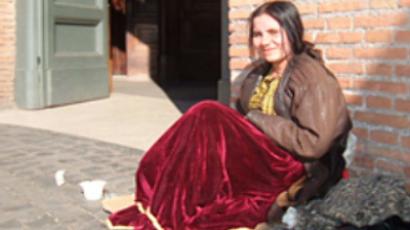Counting heads of arctic nomads
For the first time in 80 years scientists are conducting a census of the nomadic peoples of the Arctic region. Data was hard to find as they had to be found first in the boundless frozen expanses.
For centuries the Nenets people have followed the reindeer herds throughout the tundra and have retained their freedom.
“Statistics can only be collected when they visit residential areas, which is twice a year,” explained Igor Semenov, Northern Mission Director.
“A traveller marries a local girl and takes her away”, a Nenets folk song says, and that is still the way families appear. The local administration usually has no records of them.
The main goal of the Arctic region census is to find and count all the nomadic people. But they have also prepared a large questionnaire on reindeer herding and want to know how the herdsmen spend time and when their children first start to hunt.
“Sometimes it was hard to calculate the age of their children. They would use fingers to count times when they last visited their family, though they did know everything about their brothers and sisters,” said Stanislav Kiselev, Northern Mission Co-Director.
The last census was conducted 80 years ago and life has noticeably changed since – kerosene has been replaced by electric generators to get light.
Even space-age technology has appeared in their lives. Parts of rockets that blast off from nearby Plesetsk Cosmodrome often fall onto tundra and are picked up by locals who use them to make stoves, boats, and jewellery.
Nothing is left unused. Bread can appear to be baked in an oil canister.
Forty previously unrecorded families from the remote Kanin Peninsula were added to the census over the summer.
Nevertheless, several more seasons of research and long conversations with the nomadic people of the Arctic region are yet to come.













